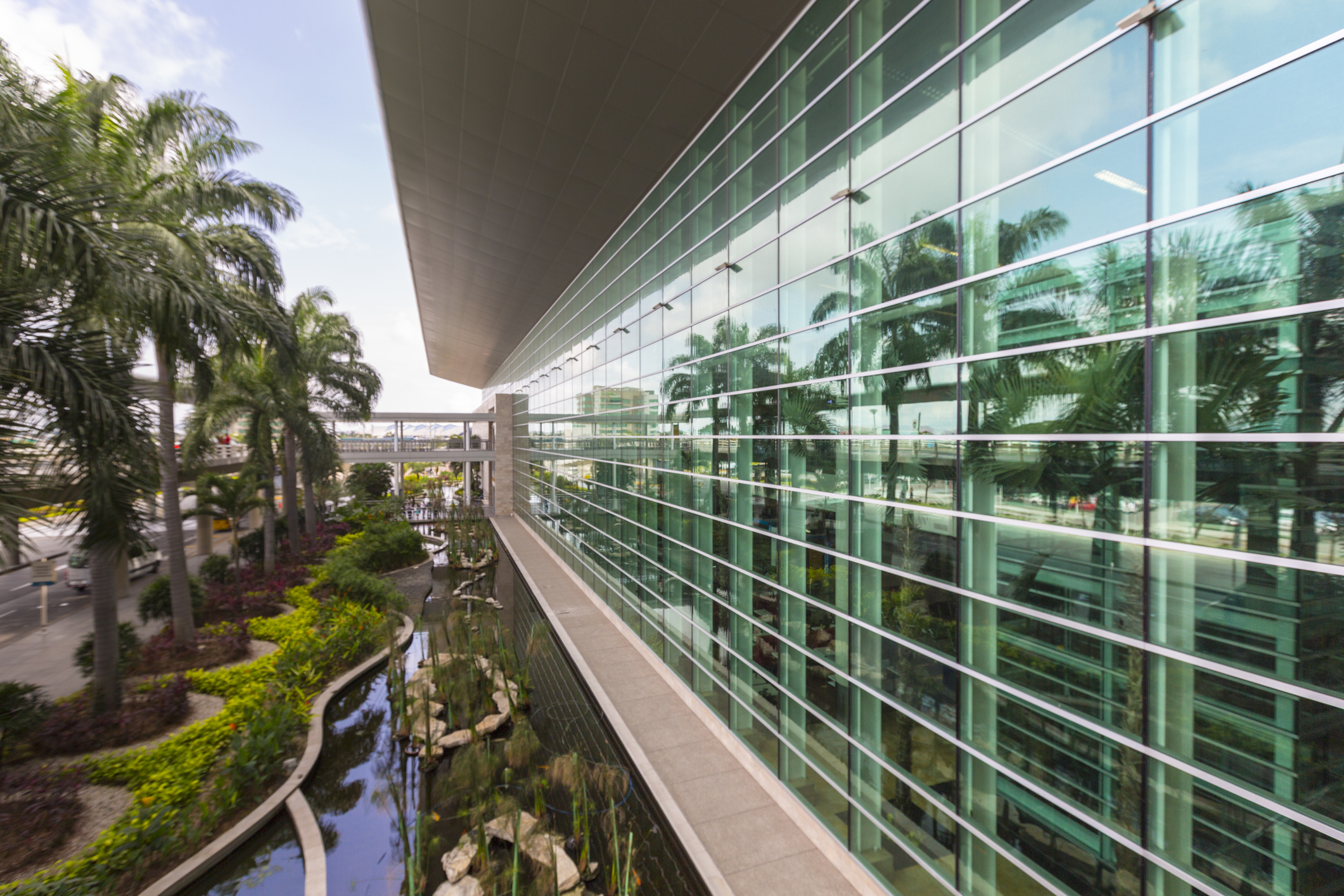Latin America is a region that spans two continents, boasts coastlines that rise from oceans, gulfs and seas, and straddles two hemispheres across the equator. From an economic standpoint, Latin America is emerging as one of the world’s most important regions and nowhere is this more evident than in its growing aviation sector. It’s a region that may have trailed other regions, but is now a rising star and the world is watching.
Airports are being modernized, airline alliances are being strengthened, and low-cost carriers are doing what they do best — keeping fares lower and competitors watching. Passenger demand is rising too, and with it comes the expectation for better airline service, airport facilities like lounges, and protections that ease the burdens and stresses of travel much like in any other region.
But, some clouds persist, forming economic and political storms that threaten to derail progress and slow down an economic engine that has waited a long time to make some noise. For Priority Pass, Latin America is fertile ground as our expanding network of airport lounges flourishes. Now with more than 25 lounges between Argentina, Brazil, Chile, Colombia, Mexico and others.
Latin America really does offer a little something for every airline. But what does all this mean for passengers? In short, increased demand should mean better service.
Four seasons in a weekend? Yes, and you don’t even have to leave Latin America
You can span continents, relax on magnificent beaches, and then ski at some of the highest peaks imaginable. Leave one hemisphere in winter just before the season changes and you’ll arrive in summer. Wait long enough to welcome autumn, then jump the equator to return to springtime. You can do all this and you would still be in Latin America.
From Mexico, through the Caribbean and Central America, across to South America, the nations of this region boast a diversity of climates yet speak three main languages—Spanish, Portuguese and English. Spanish being the most prevalent. Despite the unity of language and the diversity of resources, Latin America has been a few steps behind other regions when it comes to a fully developed aviation market. But that’s changing fast.
Give me safe flight, an on-time departure, and a place to relax in comfort
Latin America saw its first airport lounge open in Panama in 1992. Today, Priority Pass members have access to 70+ VIP lounges at airports in 25+ countries in the region. The number of lounges in Brazil and Argentina are growing the fastest. Brazil has reached an airport lounge population record that puts it close to U.S. airport population growth and Argentina isn’t far behind. This is not only reflective of the overall growing demand for air travel in Latin America, but also the importance that the general Traveller is placing on the airport environment, especially for the flyer seeking a VIP experience. For example, an influx of higher-end Travellers to the United States from Latin America has made South Florida a favorable destination.
A breakdown of the travel population in Latin America yields some other interesting findings.
Rediscovering the Americas
Euromonitor International, a market research company, recently issued a report which showed that a changing work dynamic, is sizing up the demographics among air Travellers in Latin America. The report cites that a heightened sense of female empowerment in the region has led to more solo travel and a blurring of the lines between business and leisure. The tendency to mix work and personal time is typically associated with younger Travellers, but Euromonitor International also finds that older Travellers with money and time at their disposal are a significant part of the growing travel trend in Latin America.
The Latin American Travel Association (LATA), a UK-based membership association looking to promote Latin America as a tourist destination, reports that Travellers over age 55 make up the bulk (43%) of a growing segment of Travellers to Latin America from the UK. According to a LATA survey of over 3500 Travellers, culture, history and heritage are the top reasons for visiting Latin America, with Costa Rica, Chile, Argentina, Peru and Colombia seeing the largest growth in the last two years.
Progress continues and the winds are favorable for the travel industry in Latin America despite sometimes turbulent changing political views and rebounding from regional recessions (the hardest felt in Brazil and Venezuela). Changes in government policy toward a more liberalized environment have led to infrastructure investments and airline competition, particularly by low-cost carriers that compete against large airline groups such as LATAM. This has made air travel accessible to more people much in the same way that it has created demand in other parts of the world where barriers have fallen. If you ever want to know just which way the economic winds are blowing in a particular region, pay attention to the airlines.
From flags to riches: Airlines reap benefits of a new Latin American landscape
A drive to a large international airport like New York’s JFK offers glimpses of the past and future. If you’re an aviation geek, you’ll rarely find a more impressive collection of international carriers with their plane tails rising above the terminals like the flags of nations. In many ways, airports perfectly display the collective body of international cooperation, much like the United Nations.
Before deregulation took hold in their respective regions, many western countries had national airlines that would proudly represent their home nations, earning them a reputation for service and punctuality, whether good or bad. One market that lagged behind the deregulation game was Latin America.
The recent focus on the region by global carriers is a direct response to changes in policies and investments that have created a more favorable environment for airlines and passengers. But, as passenger demand increases, so does the need to satisfy the discerning tastes and preferences of the growing frequent flyer population in the region.
According to CAPA which provides data and analysis for aviation markets, there are four main airline entities in Latin America: Aeromexico, Avianca, Copa and LATAM. Collectively, these airline groups represent nearly 40% of capacity (seat availability) in Latin America among all carriers and nearly 50% of capacity is controlled by Latin American Airlines.
The LATAM group has created a regional and international powerhouse that is part of the Oneworld Alliance, featuring airline giants British Airways and American Airlines. American Airlines is perhaps the most entrenched U.S. carrier, having created a Latin American “fortress” hub at its facilities in Miami.
Delta Air Lines, part of the SkyTeam Alliance with Air France and KLM, is eyeing Latin America with a keen focus too. The airline has formed a joint venture with Aeroméxico to better align schedules and fares. The airline also has partnered with low-cost carrier GOL of Brazil to offer connecting service to smaller cities.
The big players aren’t the only ones making noise, however. CAPA – Centre for Aviation states that the number of low-cost carriers in Latin America has grown beyond ten for the first time and gone from primarily flying within Mexico and Brazil, to now include Colombia, Costa Rica, Peru and coming soon Argentina, Chile and Uruguay. Even U.S. mid- and low-cost carriers like Spirit, JetBlue and Southwest carry passengers to nearby destinations in Latin America from the U.S. using their smaller aircraft. Latin America really does offer a little something for every airline.
However, when industry, government and passenger interests conflict, things tend to slow down.
Political headwinds might slow down your flight
While airlines like infrastructure spending, government regulations affecting issues from fuel fees to consumer friendliness are sometimes seen as obstacles despite the best of intentions. The International Air Transport Association (IATA), the industry trade group representing 275 of the world’s airlines, predicts that by 2034, passenger growth in Latin America is expected to double.
As the political winds blow across the aviation landscape, Latin America remains an emerging force and that should bode well for air passengers in the long run. More demand means more flights; more flights mean busier airports; and big crowds create a need for Travellers to get away from the stress. Airports will respond, as Mexico has shown with its upgrades to Mexico City’s Benito Juarez International Airport. Airlines will respond as Avianca has shown by becoming the first airline in Latin America to offer satellite-based in-flight Wi-Fi.
For Priority Pass Members, Lounge Class truly is a sought-after commodity and that’s why we’re expanding the availability of lounges in Latin America – a region so diverse, yet unified like no other.
REFERENCED LINKS:
IATA press release (04 June 2017)
http://www.iata.org/pressroom/pr/Pages/2017-06-04-01.aspx
Euromonitor International Intro Paragraph on Latin America workforce trends
http://blog.euromonitor.com/2017/04/changes-work-dynamics-latin-america-travel-market.html
LATA travel trends report
http://www.lata.travel/news/lata-reveals-results-2017-lata-travel-trends-report/#sthash.y34dzapL.Gk3QXI1d.dpbs
CAPA – Centre for Aviation
https://centreforaviation.com/insights/analysis/latin-americas-airline-ceos-discuss-the-market-liberalisation-challenges--opportunities-part-1-348127
Economic snapshot of Latin America from Focus Economics
http://www.focus-economics.com/regions/latin-america




